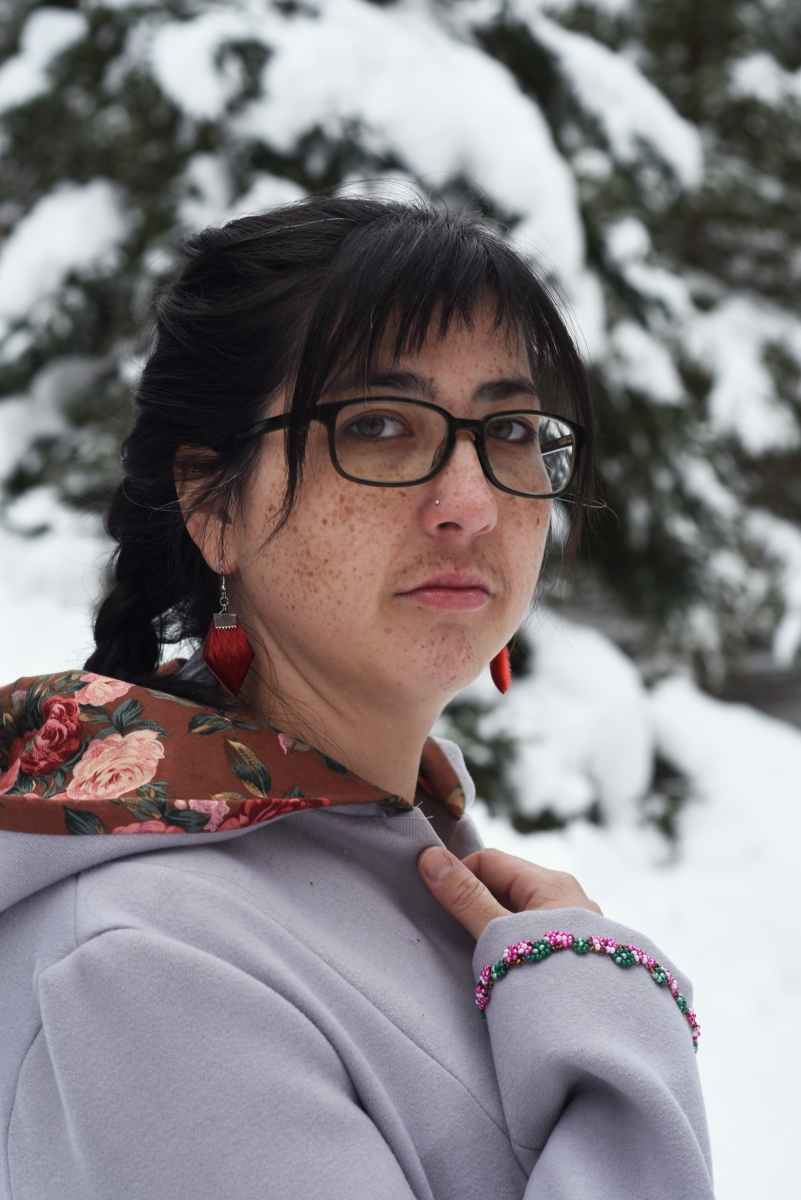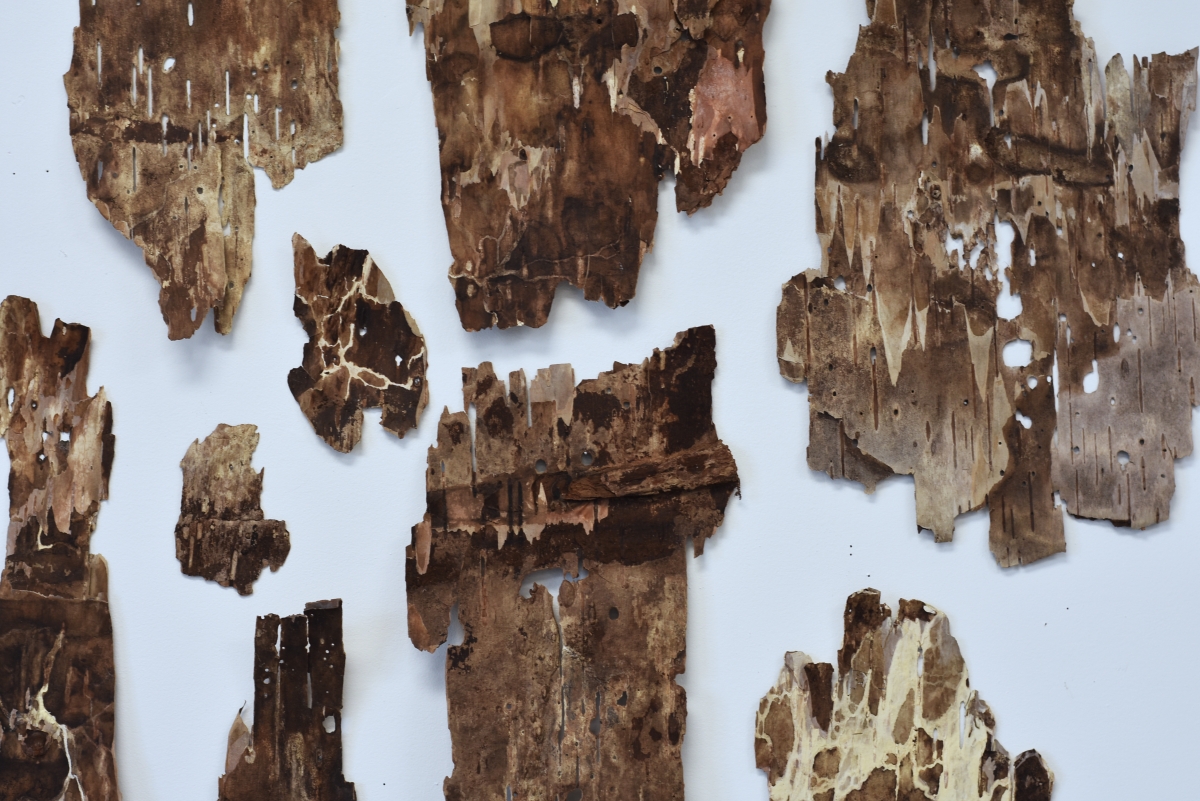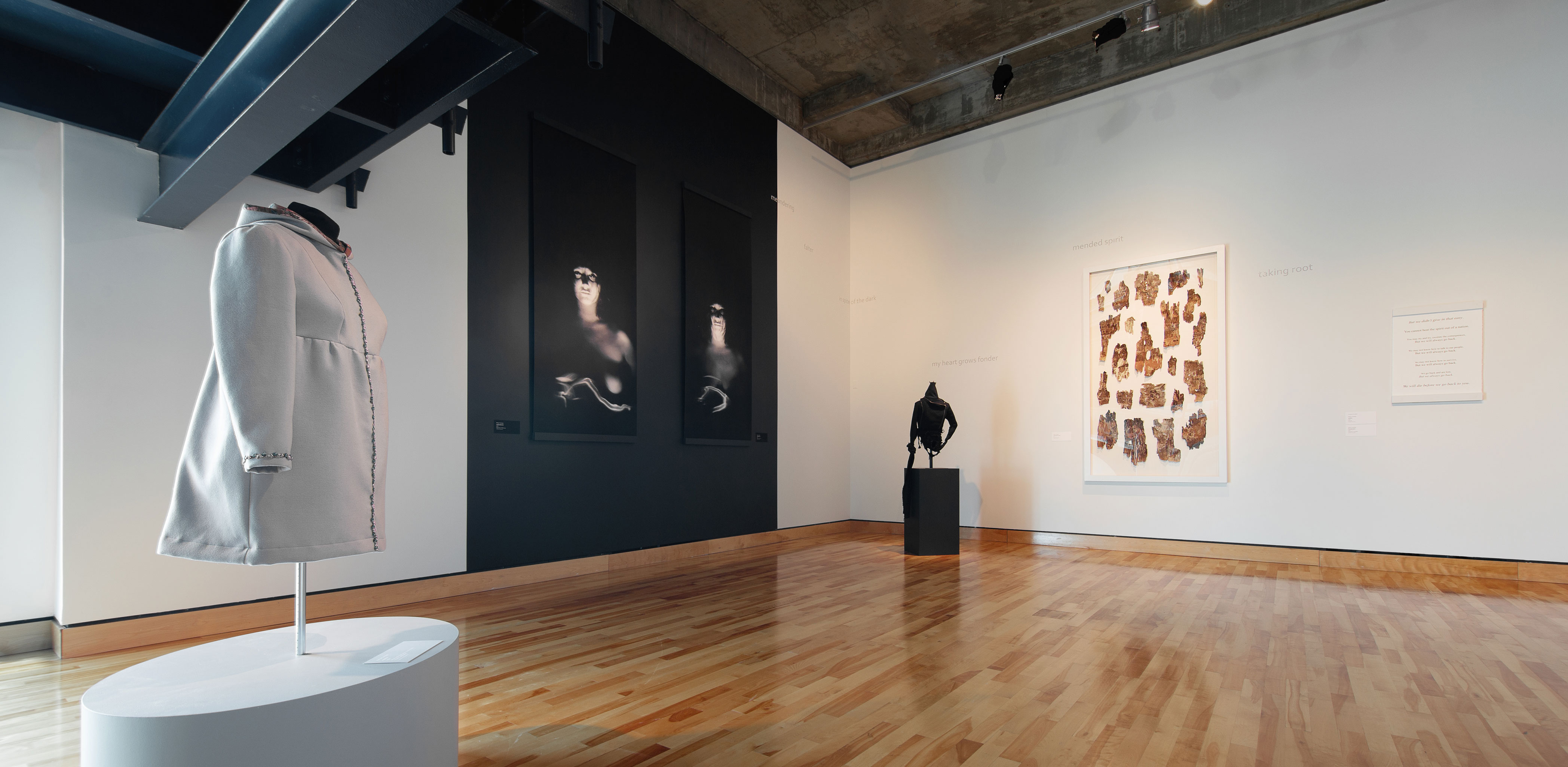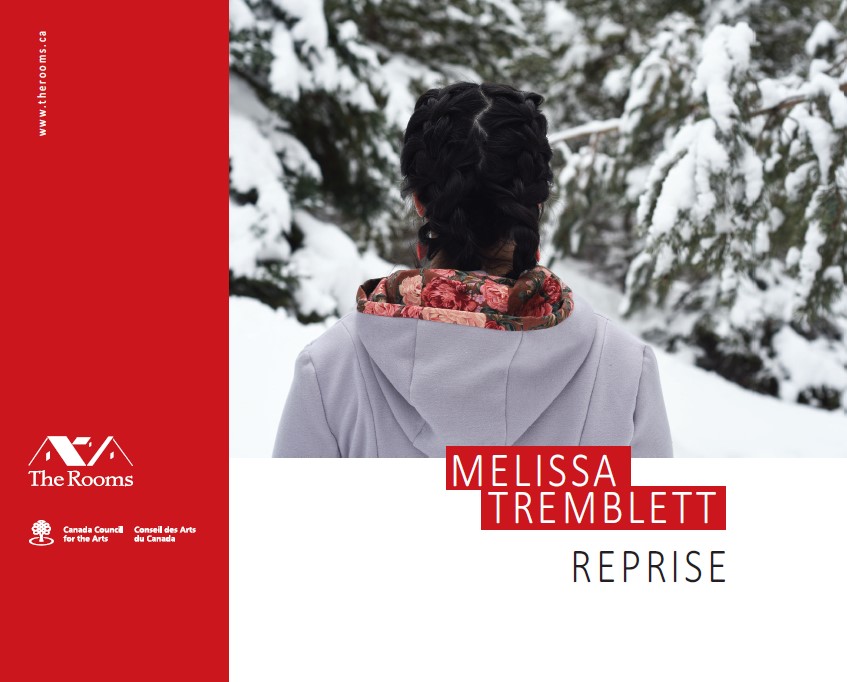Melissa Tremblett: Reprise
Brochure
Click the brochure image to download a PDF copy of the brochure. The brochure content is also available immediately following the image, in an easy to read format.
Elbow Room
The Elbow Room Residency Program acts as a laboratory for emerging artists to develop and exhibit new artworks. Over a three-month period, The Rooms provides a professional studio space as well as curatorial and technical support.
Artist Bio

Melissa Tremblett is a visual artist of Innu and English heritage from the community of Sheshatshiu, Labrador.
She works with installation, performance and photography, as well as traditional techniques of doll making and beading to
explore identity, community and the transmission of knowledge.
Artist Acknowledgements
I would like to acknowledge The Rooms for providing ongoing access to the Innu ancestral objects held within their vaults, as well as the space to create and exhibit the work in this show. I would like to thank Mireille Eagan, Curator of Contemporary Art, for her guidance and support. I want to thank Emily Critch for the emotional and intellectual labour which went into her essay Backstitches. Finally, I would like to thank my husband, Jason, for emboldening me to live my truth.
Essay by Emily Critch
Backstitches
"Colonialism broke us, and we’re still figuring out how to love and be broken at the same time.”
-Billy-Ray Belcourt[1]
One of the lessons you are first taught when learning how to operate a sewing machine is the importance of using a backstitch to finish a seam. Forward, then back. The backstitch locks everything in place, going back to where you once began is a necessity or else, in time, the garment will fall apart.
This powerful and repetitive action provides the framework for Reprise by Melissa Tremblett. The word “reprise” means to return to an earlier passage in a piece of music. In the context of this exhibition, it refers to Tremblett learning from her lived experiences as an Innu woman and from her ancestors. As she sifts through the movements of her life while sitting at her sewing machine, she transcends colonial notions of time and space by mirroring and embodying the creative practices of her grandmother, Madeline Michelin.
Reprise is a resilient and vulnerable declaration of selfhood that is grounded in her personal growth and healing. This space is charged with agency as Tremblett presents to the viewer the ways in which colonial trauma has impacted her life, territory and community. In the wake of the suicide crisis in Sheshatshiu, Labrador, this exhibition arrives at a time of absolute urgency and acknowledges how deeply Indigenous people feel the internal, ongoing and lasting effects of colonization on the body and spirit.
In navigating these conditions and their influence on her life, Tremblett looks to her past while engaging in methods of art-making that are intuitive, ancestral and therapeutic. A pair of long exposure film photos harken to a series of self-portraits Tremblett created in 2013 in which she playfully used props to create dynamic sources of light and intimately work through her relationship to her own body. Between these portraits is a cascade of birch bark fragments. This constellation of self-portraiture recognizes intimate parallels between her body and the bodies of trees. Tremblett calls attention to bark as protective (s)kin, a living relation acknowledging the interconnectedness between the artist and the land that shapes her.
It is important to recognize that, like the land, the Indigenous belongings at The Rooms can also be considered living relations. For Tremblett to bring these ancestral objects into the public is an act of reclamation, and a way to tell Innu stories. Although conversations surrounding collections are changing and there are efforts to decolonize museums and galleries across Canada and internationally, too often Indigenous people cannot access their own objects and cultural teachings from the vaults of historically colonial institutions. Tremblett braided inspiration from caribou jackets and her own mental health journey in the creation of the two coats on display in Reprise. The dark and fraying strait jacket symbolizes her experiences with past traumas of an eating disorder and addiction, and the light grey jacket focuses on honouring her body and spirit in the present. Not only is garment-making an act of remembering and connecting with her grandmother, Madeline, it is a reactivation of traditional practices and rematriating the embodied knowledge of Tremblett’s ancestors.
As Indigenous researcher Dr. Lois Edge discusses: “In beadwork, there are often two pieces of beadwork that are replicated as a reciprocal or mirror image of the other… these two halves of a beadwork design when viewed side by side as positioned on the right and left sides of the human body come together in the form of a symmetrical whole.”[2] This concept of mirroring resonates within Tremblett’s exhibition. She learned to make tea dolls from holding and recreating the dolls made by her grandmother. Displaying the dolls of Tremblett and Michelin together shows a continuum of Innu knowledge that draws connections between past and present, while also procuring a future.
Revisiting and repetition is embedded within the ancestral fibres of our bodies. We go back because we know that means moving forward and creating a future for the next generation. We live in a world where Indigenous existence and lands have been threatened with eradication, healing ourselves is one of the most radical acts we can do to help our communities. It is in this vulnerable space created by Tremblett that as Indigenous people, we find love between each other and do the best we can to fill in the cracks.
Emily Critch is a curator, writer and artist of Mi’kmaq and settler ancestry from Elmastukwek, Ktaqamkuk Territory (Bay of Islands, Newfoundland and Labrador).

Image: Self-portrait as tree (2014). Reclaimed birch bark. Dimensions variable. Collection of the artist. Photo: Emily Critch.
[1] Belcourt, Billy-Ray, “Colonialism: A Love Story”, This Wound is a World. Frontenac House Poetry, 2017, p. 27.
[2] Edge, Lois Elizabeth, My Grandmother’s Moccasins: Indigenous Women, Ways of Knowing, and Indigenous Aesthetic of Beadwork. 2011. University of Alberta, PhD dissertation, p. 8.
Header image: Installation shot of “Melissa Tremblett: Reprise” at The Rooms.
Artist image: reprise (2020). Mixed media (wool, cotton, cotton thread, magnets, seed beads). 43 x 66 x 94 cm. Collection of the artist. Photo: Emily Critch.


